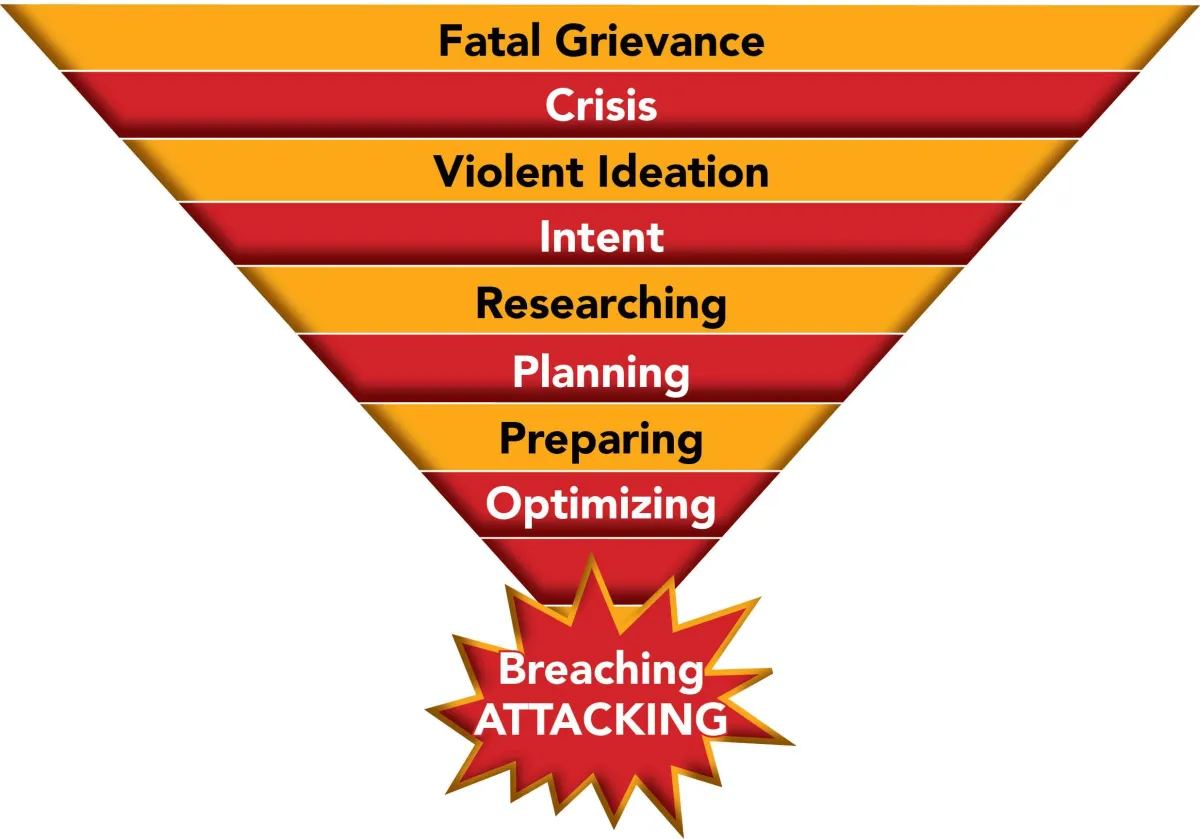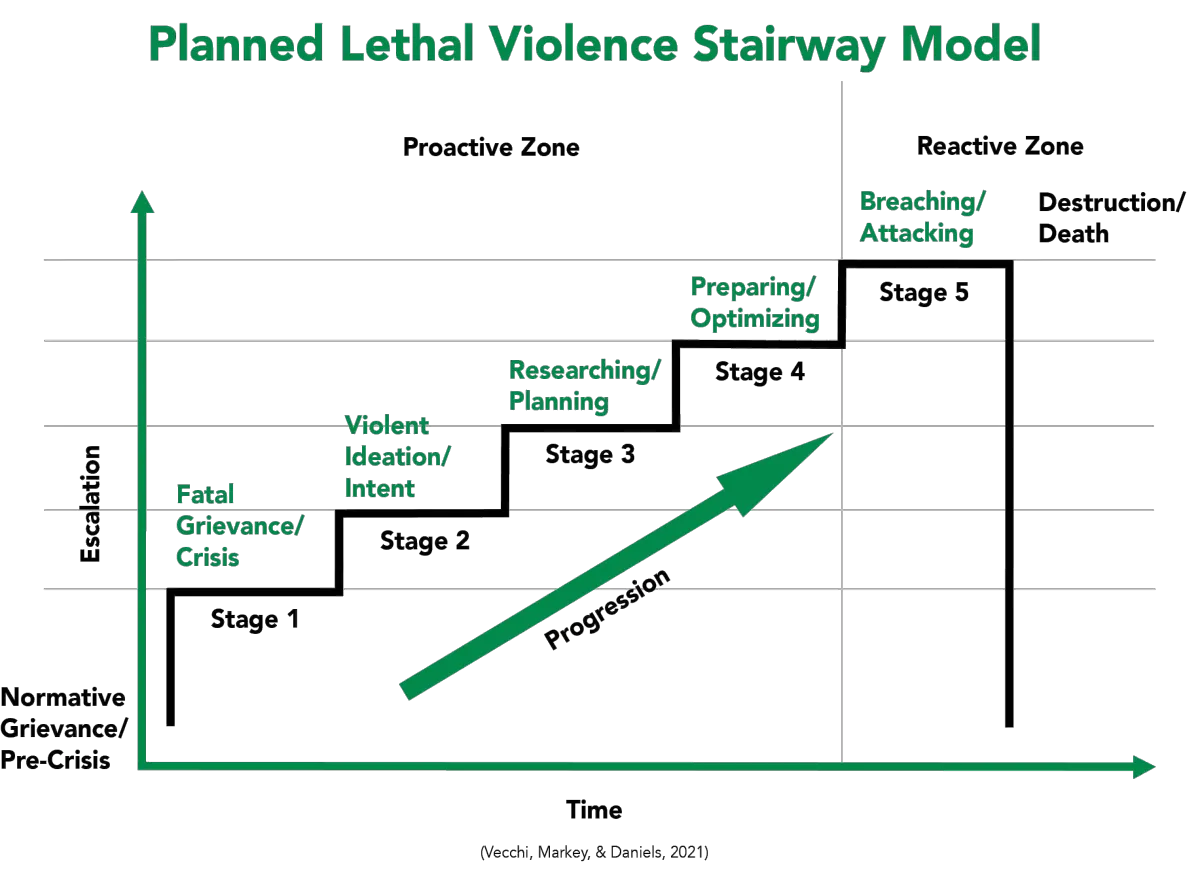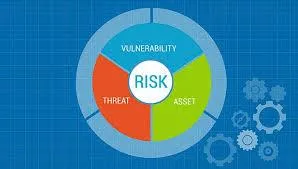Our Training
THREAT PREVENTION
Our Training
THREAT PREVENTION

VGI Threat Detection and Reporting Certificate
This certificate course consists of 4 contact hours of instruction on the observation skills necessary to successfully identify, evaluate, and report concerning behaviors of planned lethal violence in the workplace and educational settings.
Offender Motivation and Behavior
Pre-Attack Indicators of Targeted Violence
Behavioral Baselines and Anomalies
Accurate Reporting
Case Studies and Scenario-Based Exercises
VGI Behavioral Threat Assessment Certification
This certification course consists of 16 contact hours of instruction in behavioral threat assessment methods for identifying, preventing, and mitigating planned lethal violence in the workplace and educational settings. It equips the participant with the knowledge and skills to identify, classify, and engage individuals who pose a threat. Emphasis is placed on assessing if a person of concern is on the pathway to violence and classifying the level of threat to determine appropriate interventions while avoiding false positives and false negatives. This course also covers behavioral threat assessment team structure and investigative procedures, including interviewing, evidence collection, and writing safety plans.
Planned Lethal Violence
Pathway to Violence
Direct and Sequential Behaviors
Avoiding False Positives and Negatives
Case Studies and Scenario-Based Exercises


VGI Behavioral Threat Detection and Assessment Instructor Certification
This course comprises 16 contact hours and prepares professionals to instruct VGI behavioral threat detection and assessment courses based on the work of Gregory M. Vecchi, Ph.D. Emphasis is placed on subject-matter expertise, instructional methodologies, and practical teaching strategies to enhance the ability to train others in identifying, assessing, mitigating, and reporting potential threats of planned lethal violence in the workplace and educational settings.
Behavioral Threat Detection and Assessment Best Practices
Adult Learning Principles and Lesson Plans
Assessing Trainee Comprehension
Teach-Back Sessions
Case Studies and Scenario-Based Exercises
Risk Analysis,
Vulnerability Assessment, and Violence Mitigation
This course explores offender-based risk and vulnerability assessment principles and practices to prevent targeted violence in schools and workplaces. Participants will learn to evaluate physical, procedural, and cultural vulnerabilities, assess threats within specific environments, and identify protective measures to mitigate risks. Topics include environmental design, policy analysis, threat-specific risk factors, and integrating assessment findings into comprehensive safety planning. Through case studies and practical exercises, attendees will gain the tools to proactively reduce vulnerabilities and enhance security in educational and organizational settings.
Identifying and Analyzing Potential Risks of Targeted Violence
Developing Comprehensive Risk Mitigation Strategies
Best Practices for Conducting Vulnerability Audits
Assessing Vulnerabilities in Physical and Cyber Environments Based on Known Offender Behavior
Case Studies and Scenario-Based Exercises


VGI Threat Detection and Reporting Certificate
This certificate course consists of 4 contact hours of instruction on the observation skills necessary to successfully identify, evaluate, and report concerning behaviors of planned lethal violence in the workplace and educational settings.
Offender Motivation and Behavior
Pre-Attack Indicators of Targeted Violence
Behavioral Baselines and Anomalies
Accurate Reporting
Case Studies and Scenario-Based Exercises

VGI Behavioral Threat Assessment Certification
This certification course consists of 16 contact hours of instruction in behavioral threat assessment methods for identifying, preventing, and mitigating planned lethal violence in the workplace and educational settings. It equips the participant with the knowledge and skills to identify, classify, and engage individuals who pose a threat. Emphasis is placed on assessing if a person of concern is on the pathway to violence and classifying the level of threat to determine appropriate interventions while avoiding false positives and false negatives. This course also covers behavioral threat assessment team structure and investigative procedures, including interviewing, evidence collection, and writing safety plans.
Planned Lethal Violence
Pathway to Violence
Direct and Sequential Behaviors
Avoiding False Positives and Negatives
Case Studies and Scenario-Based Exercises

VGI Behavioral Threat Detection and Assessment Instructor Certification
This course comprises 16 contact hours and prepares professionals to instruct VGI behavioral threat detection and assessment courses based on the work of Gregory M. Vecchi, Ph.D. Emphasis is placed on subject-matter expertise, instructional methodologies, and practical teaching strategies to enhance the ability to train others in identifying, assessing, mitigating, and reporting potential threats of planned lethal violence in the workplace and educational settings.
Behavioral Threat Detection and Assessment Best Practices
Adult Learning Principles and Lesson Plans
Assessing Trainee Comprehension
Teach-Back Sessions
Case Studies and Scenario-Based Exercises

Risk Analysis, Vulnerability Assessment, and Violence Mitigatio
This course explores offender-based risk and vulnerability assessment principles and practices to prevent targeted violence in schools and workplaces. Participants will learn to evaluate physical, procedural, and cultural vulnerabilities, assess threats within specific environments, and identify protective measures to mitigate risks. Topics include environmental design, policy analysis, threat-specific risk factors, and integrating assessment findings into comprehensive safety planning. Through case studies and practical exercises, attendees will gain the tools to proactively reduce vulnerabilities and enhance security in educational and organizational settings.
Identifying and Analyzing Potential Risks
Developing Comprehensive Risk Mitigation Strategies
Best Practices for Conducting Vulnerability Audits
Assessing Vulnerabilities in Physical and Cyber Environments
Case Studies and Scenario-Based Exercises
THREAT INTERVENTION

De-Escalation and Crisis Intervention
This course focuses on the role of crisis and suicide intervention in behavioral threat assessment and the prevention of targeted violence. Participants will explore the connections between emotional crises, suicidal behavior, and the escalation to violence, learning how to recognize, assess, and intervene effectively. The course provides practical strategies for de-escalating high-risk situations, managing individuals in crisis, and incorporating suicide prevention techniques into threat management plans that enhance safety in schools and workplaces.
Recognizing Suicide Warning Signs and Risk Factors
De-escalation Strategies in Suicide Prevention
Crisis Communication and Active Listening Techniques
Providing Immediate Support and Intervention
Case Studies and Scenario-Based Exercises

Engaging Individuals with Mental Illness and Personality Disorders
This course explores the role of mental illness and personality disorders in behavioral threat assessment and targeted violence prevention. Participants will learn to recognize symptoms, understand their potential impact on behavior, and assess how these factors influence the risk of violence. The course emphasizes evidence-based approaches for managing individuals with mental health challenges, balancing safety with empathy, and incorporating mental health resources into threat management strategies to navigate complex situations effectively while fostering a culture of safety and support in schools and workplaces.
Overview of Common Mental Illnesses and Personality Disorders
Interacting with Mental Illness and Personality Disorders
Dealing with Delusions and Hallucinations
Psychosis and Psychopathy
Cases Studies and Scenario-Based Training
THREAT INTERVENTION
THREAT RESPONSE

Situational Awareness and Pre-Attack Behaviors
This course focuses on developing situational awareness and identifying pre-attack indicators as critical components of behavioral threat assessment and targeted violence prevention. Participants will learn to recognize subtle behavioral cues, environmental warning signs, and patterns of escalation that may precede acts of violence. Emphasis is placed on proactive observation, threat recognition, and integrating situational awareness into risk assessment protocols to enhance safety and manage incidents in schools and workplaces.
Developing Heightened Situational Awareness
Identifying Pre-Attack Indicators and Behavioral Cues
Environmental Scanning and Threat Assessment
Proactive Decision-Making in High-Risk Situations
Real-Life Case Studies and Scenario-Based Training

Escaping, Evading, and Engaging Targeted Violence
This course equips participants with life-saving strategies for escaping, evading, and, if necessary, engaging threats of targeted violence in schools and workplaces. Participants will learn the principles of "Run, Hide, Fight," situational awareness, and decision-making under extreme stress. The course emphasizes proactive planning, environmental awareness, and effective communication during critical incidents to respond swiftly and effectively to active threats, enhancing personal safety and organizational resilience.
Escaping and Evading Targeted Violence
Using Cover and Concealment
Defensive Strategies for Engaging Threats
Stop-the-Bleed
Case Studies and Scenario-Based Exercises
De-Escalation and Crisis Intervention
This course focuses on the role of crisis and suicide intervention in behavioral threat assessment and the prevention of targeted violence. Participants will explore the connections between emotional crises, suicidal behavior, and the escalation to violence, learning how to recognize, assess, and intervene effectively. The course provides practical strategies for de-escalating high-risk situations, managing individuals in crisis, and incorporating suicide prevention techniques into threat management plans. Through case studies and interactive exercises, attendees will learn to address complex scenarios and enhance safety in schools and workplaces. It is ideal for threat assessment professionals, mental health practitioners, and organizational leaders.
Recognizing Suicide Warning Signs and Risk Factors
De-escalation Strategies in Suicide Prevention
Crisis Communication and Active Listening Techniques
Providing Immediate Support and Intervention
Case Studies and Scenario-Based Exercises

Engaging Individuals with Mental Illness and Personality Disorders
This course explores the role of mental illness and personality disorders in behavioral threat assessment and targeted violence prevention. Participants will learn to recognize symptoms, understand their potential impact on behavior, and assess how these factors influence the risk of violence. The course emphasizes evidence-based approaches for managing individuals with mental health challenges, balancing safety with empathy, and incorporating mental health resources into threat management strategies. Case studies and practical tools will provide attendees with the knowledge to navigate complex situations effectively while fostering a culture of safety and support in schools and workplaces. It is ideal for threat assessment professionals, mental health practitioners, and safety leaders.
Overview of Common Mental Illnesses and Personality Disorders
Interacting with Mental Illness and Personality Disorders
Dealing with Delusions and Hallucinations
Psychosis and Psychopathy
Cases Studies and Scenario-Based Training

THREAT RESPONSE

Situational Awareness and Pre-Attack Behaviors
Understanding situational awareness and recognizing pre-attack behaviors are critical to preventing violence. This training equips participants with the skills to detect early warning signs of danger, assess environments for potential threats, and remain vigilant in high-risk situations. By honing these skills, you can significantly improve your ability to avoid or mitigate incidents before they escalate.
Developing Heightened Situational Awareness
Identifying Pre-Attack Indicators and Behavioral Cues
Environmental Scanning and Threat Assessment
Proactive Decision-Making in High-Risk Situations
Case Studies and Scenario-Based Exercises
Escaping, Evading, and Engaging Targeted Violence
This course teaches participants how to effectively escape, evade, or engage in the face of targeted violence. Learn the practical strategies and techniques necessary to avoid danger, de-escalate potentially violent situations, and, when necessary, protect yourself or others. Whether you’re in a civilian or professional role, these life-saving skills are crucial for staying safe in volatile situations.
Escaping and Evading Targeted Violence
Using Cover and Concealment
Defensive Strategies for Engaging Threats
Stop-the-Bleed
Case Studies and Scenario-Based Exercises




